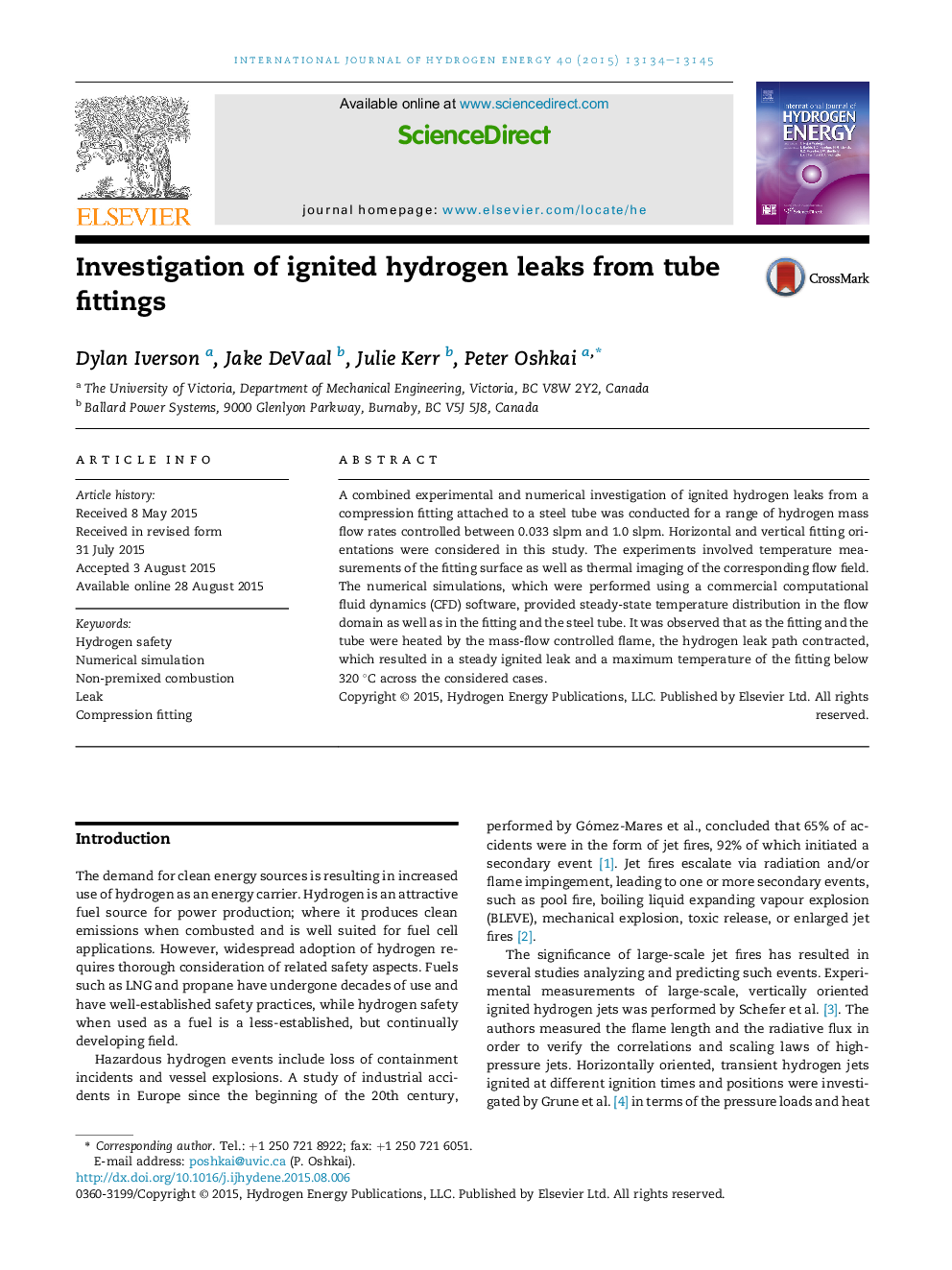| Article ID | Journal | Published Year | Pages | File Type |
|---|---|---|---|---|
| 1269229 | International Journal of Hydrogen Energy | 2015 | 12 Pages |
•Small-scale ignited hydrogen leaks are studied numerically and experimentally.•Heating of the fitting caused hydrogen leak path contraction, which lead to a steady ignited leak.•Maximum observed temperature of the fitting was below 320 °C.
A combined experimental and numerical investigation of ignited hydrogen leaks from a compression fitting attached to a steel tube was conducted for a range of hydrogen mass flow rates controlled between 0.033 slpm and 1.0 slpm. Horizontal and vertical fitting orientations were considered in this study. The experiments involved temperature measurements of the fitting surface as well as thermal imaging of the corresponding flow field. The numerical simulations, which were performed using a commercial computational fluid dynamics (CFD) software, provided steady-state temperature distribution in the flow domain as well as in the fitting and the steel tube. It was observed that as the fitting and the tube were heated by the mass-flow controlled flame, the hydrogen leak path contracted, which resulted in a steady ignited leak and a maximum temperature of the fitting below 320 °C across the considered cases.
